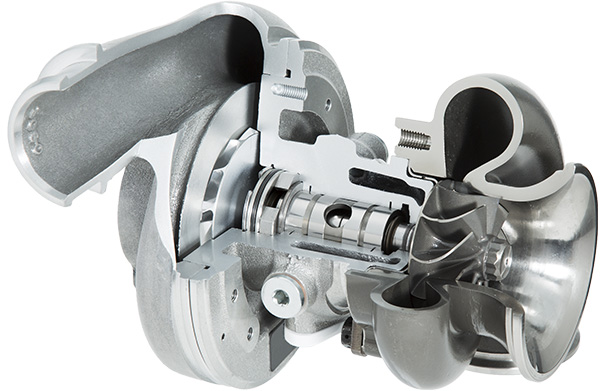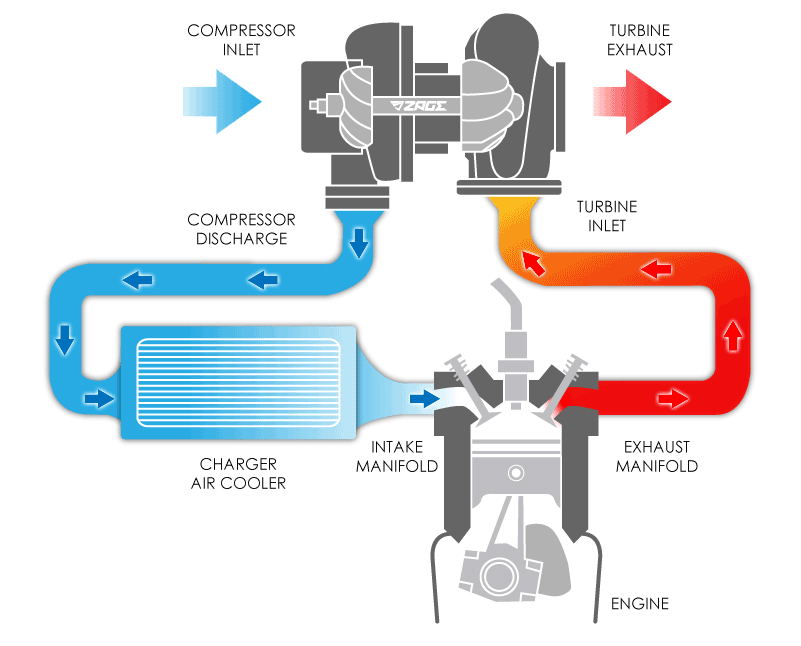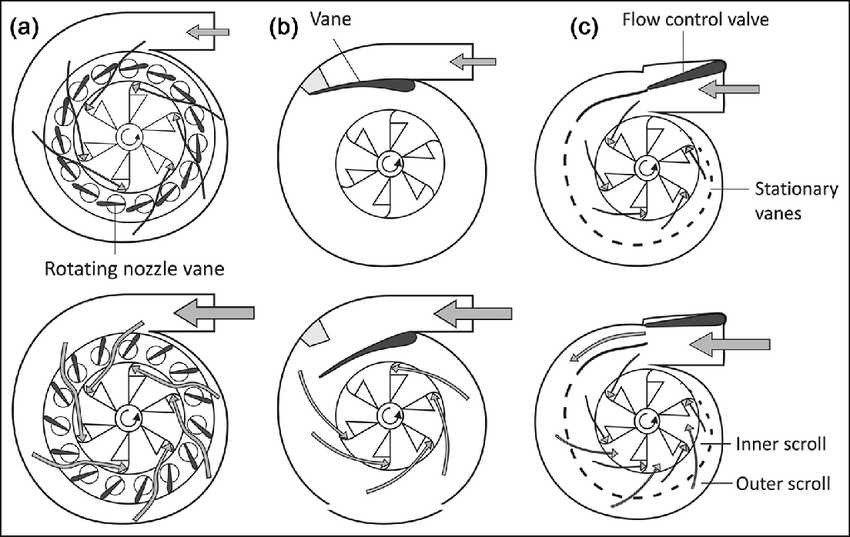Over the years, automotive technology is reaching new heights. The IC engines are becoming more powerful, more efficient, more reliable and are even less harmful to the environment. In this hustle and bustle came a small little thing called ‘turbo’ that made a world of a difference. Turbochargers, as we know are still used in modern cars.
Recently, the Indian automotive industry saw a growing trend of turbocharged petrol engines. But why is turbo being introduced in the vehicles? what’s so special about it? does it really make a difference? Well, in short, Yes! But what does this turbo do that it makes a small engine does big things? Let’s find out.

Turbocharger
In simple terms, A turbo or a turbocharger is a type of supercharger that makes your car go wheeee! This mechanical device works on a fairly simple principle and works in sync with the engine. Before explaining its working, let’s see what are the major components of a turbo. A turbocharger comprises:

- A turbine wheel and
- A compressor wheel
- And a shaft that connects the turbine and compressor
All the parts are enclosed in a casing to protect them from the outer environment.
Turbocharger Working
With the major parts clear, the working is fairly simple to understand. Basically, the high flowing exhaust gases from the exhaust powers the turbine.

- The turbine powers the compressor as they both are mounted on the same shaft.
- The compressor sucks in air from the atmosphere and compresses it and forces the compressed air into the engine.
- One end of the turbo’s air inlet is connected to the air filter that takes in the air.
- So, this air passes through the compressor and voila! turbo compresses the atmospheric air. (on an average, a turbocharged engine from a factory compresses the air by up to 4-5psi).
- This is where the atmospheric air experience a rise in the temperature due to compression and exhaust gas temperature.
- The air now passes through an intercooler to cool the air down. Well, hot air may lead to pre-ignition or knocking in the engine.
- From the intercooler, the air now enters the intake manifold and then into the engine.
- As the fuel is injected combustion takes place in the power stroke.
- And next during the exhaust stroke, the exhaust gasses force the turbine to spin and the cycle repeats again.
PS. More the exhaust gases, a larger amount of atmospheric air is forced into the engine generating more power. (to a certain limit)
Download The GoMechanic App Now!
Well, how does this help?
The combustion process in the engine requires oxygen. And if we put more oxygen, the engine is capable of generating more power, hence more fuel is added to the engine, in turn, generating more energy. The turbo does exactly that, by compressing the atmospheric air and delivering it into the intake manifold.
Do the naturally aspirated engines differ from the turbocharged engine?
Yes, indeed the naturally aspirated engine is different from the ones that have turbocharged aspiration.
- Firstly, turbocharged engines usually use direct injection instead of MPFI (Multi-Point Fuel Injection) or any type of port injection. This is because a forced aspiration runs at higher pressure as compared to the other counterpart.
- Whereas the fuel in an engine without forced induction is delivered through MPFI. Because the naturally aspirated engine run on fairly low-pressure, conventional port injection is a better bet.
2 Major Types of Turbochargers
You might be thinking, which turbo is installed in your vehicle. Well, there are two main turbochargers through which an engine breath. A Fixed Geometry Turbo (FGT) or an A Variable Geometry Turbo (VGT).
-
Variable Geometry Turbo (VGT)

Variable Geometry Turbocharger | Image Source: (1) Not going into the very detail, long story short, a VGT can function at a wider RPM range. The most common problem with a turbocharger is the turbo lag. With a VGT it can be controlled to some extent.
- As the name suggests, a variable geometry uses vanes to control the amount of air entering the turbine.
- These vanes are connected to an actuator that either opens them or closes them.
- Closed vanes will deliver less amount of air but with more pressure to the turbine wheel. This reduces the turbo lag at low speeds as the exhaust gasses are pressurised.
- Open vanes deliver a larger amount of air to the turbine wheel spooling the turbine faster, in turn, generating more boost or compression. Well, the pressure is not a problem as the exhaust gasses at high RPMs are expelled with force.
So, a VGT delivers the convenience of both worlds, controlled lag at low RPMs and uncompromised performance at high RPMs.
-
Fixed Geometry Turbo (FGT)
The opposite of a VGT is the FGT. Unlike a VGT, fixed geometry has a specific RPM at which it works efficiently.
- This is where the problem arises, as this type operates over a fixed RPM range.
- An FGT can be designed to either operate at low RPMs reducing the turbo lag. This compromises the power at high revs.
- The FGT can also be designed to produce more boost at high RPMs. But this has an effect on the power delivers lower down the rev range increasing the turbo lag. This can also lug the engine.
Also, read 10 Things to Keep in Check when Driving a Typical Manual Transmission

Because the FGT is not as versatile as VGT, it is used mainly in city cars or vehicles with low power output. The advantage of an FGT is that it is fairly cheap to manufacture.








[…] L 16-Valve DOHC VTT VARICOR/ Storme […]